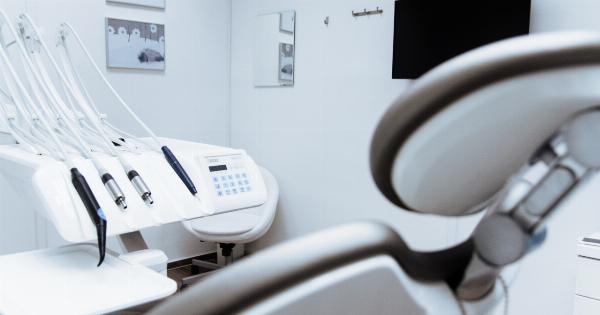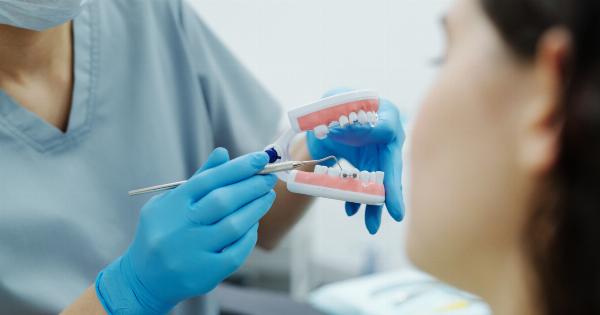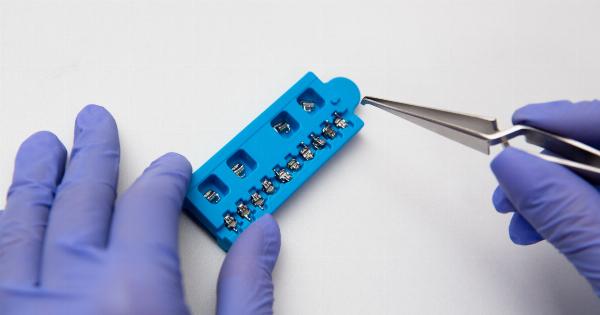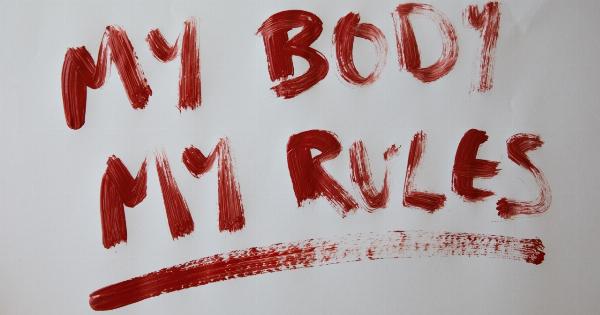Orthodontics is a specialized field of dentistry that deals with the diagnosis, prevention, and treatment of malocclusion, or improper jaw alignment.
It has come a long way since its inception, and now offers various treatment options to straighten teeth and correct jaw misalignment. Despite the advances in modern orthodontics, there are still many myths and misconceptions surrounding the field. Here are some of the most common orthodontic myths that you need to stop believing:.
Myth 1: Orthodontics is Only for Kids
One of the most common myths about orthodontics is that it is only for kids. While it’s true that many orthodontic patients are children and teenagers, adults can also benefit from orthodontic treatment.
In fact, the number of adults seeking orthodontic treatment has been steadily increasing over the years, thanks to the availability of less visible orthodontic treatment options such as Invisalign. Age is not a barrier to orthodontic treatment – as long as your teeth and gums are healthy, and you have no underlying dental issues, you can get orthodontic treatment at any age.
Myth 2: Braces are Painful
Many people believe that braces are painful and uncomfortable. While it’s true that getting braces can cause some discomfort and soreness, it’s not typically painful.
You may experience some soreness after getting your braces tightened, but this usually goes away within a few days. Modern orthodontic technology has also made braces more comfortable than before. For example, self-ligating braces use less force to move teeth and require fewer wire adjustments, resulting in less discomfort for patients.
Myth 3: Braces are Ugly and Embarrassing
Another common orthodontic myth is that braces are ugly and embarrassing, especially for teenagers.
While it’s true that traditional metal braces are more visible than other types of braces, many patients see them as a rite of passage and a badge of honor. There are also less visible options available, such as ceramic braces, lingual braces, and Invisalign, which are virtually invisible and can straighten your teeth discreetly.
Myth 4: Orthodontic Treatment Takes Forever
Many people believe that orthodontic treatment takes forever and that they will have to wear braces for years to get results.
While the length of orthodontic treatment varies depending on the severity of your condition, most treatments can be completed within 18 to 36 months. Additionally, modern orthodontic technology has made treatment time shorter and more efficient. For example, accelerated orthodontics, using techniques such as Propel or AcceleDent, can cut treatment time by up to 50 percent in some cases.
Myth 5: Orthodontic Treatment is Expensive
Another common myth about orthodontics is that it is expensive, and not everyone can afford it. While orthodontic treatment can be costly, it is also an investment in your oral health and well-being.
Many orthodontists offer payment plans and financing options to make treatment more affordable. Additionally, orthodontic treatment can help prevent dental problems that can be even more expensive to treat down the line.
Myth 6: Orthodontic Treatment is Only Cosmetic
Some people believe that orthodontic treatment is only cosmetic and not necessary for oral health. While orthodontic treatment can certainly improve the appearance of your teeth and smile, it is also essential for your oral health.
Crooked teeth can make it more difficult to clean your teeth properly, increasing the risk of gum disease, tooth decay, and other dental problems. Additionally, misaligned jaws can cause problems with chewing, speaking, and breathing, which can affect your overall health and well-being.
Myth 7: Only Braces can Straighten Teeth
Many people believe that the only way to straighten teeth is with braces. While braces are an effective and commonly used orthodontic treatment, they are not the only way to straighten teeth.
Invisalign, for example, uses a series of clear, removable aligners to gradually move teeth into the correct position. Other options include lingual braces, which are placed behind the teeth, and ceramic braces, which are less visible than traditional metal braces.
Myth 8: Orthodontic Treatment is Only for Straightening Teeth
Orthodontic treatment can do much more than just straighten teeth. Orthodontic treatment can also correct problems with bite, jaw alignment, and spacing between teeth.
For example, orthodontic treatment can help alleviate problems with overbite, underbite, crossbite, and open bite, which can cause problems with chewing, speaking, and breathing. Additionally, orthodontic treatment can close gaps between teeth and improve overall mouth function and appearance.
Myth 9: You Can’t Play Sports or Musical Instruments with Braces
Some people believe that you can’t play sports or musical instruments if you have braces. While it’s true that playing sports or musical instruments can be more challenging with braces, it’s not impossible.
Mouthguards can be worn to protect your braces while playing sports, and you can still play musical instruments with braces, although it may require some adjustment. Invisalign can also be a great option for athletes and musicians, as the aligners are removable and won’t interfere with playing sports or instruments.
Myth 10: Once Orthodontic Treatment is Done, You’re Done for Life
Many people believe that once orthodontic treatment is complete, they will never have to worry about their teeth moving again. However, teeth can continue to shift over time, especially if you don’t wear your retainer as directed.
Your orthodontist will provide you with a retainer after your treatment is complete, and it’s crucial to wear it as directed to ensure that your teeth stay in their new positions. Even with a retainer, you may need occasional touch-up treatment to keep your teeth straight and your smile looking great.




























